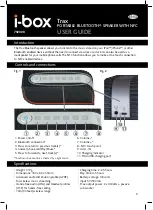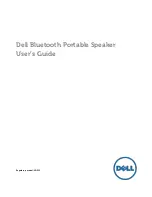
16
SUM IN
This is the input socket for external signal summing. The channel(s) with which this signal is to
be summed are selected on the
SUM
screen.
Do not apply external voltages exceeding ±10V.
MODULATION IN
This is the input socket for external modulation. Any number of channels may be AM or SCM
modulated with this signal; the target channels are selected on the
MODULATION
screen.
Do not apply external voltages exceeding ±10V.
Rear Panel Connections
REF CLOCK IN/OUT
The function of the CLOCK IN/OUT socket is set from the
ref clock i/o
menu on the
UTILITY
screen, see System Operations section.
input
This is the default setting. The socket becomes an input for an external
10MHz reference clock. The system automatically switches over from the
internal clock when the external reference is applied.
output
The internal 10MHz clock is made available at the socket.
phase lock
When two or more generators are synchronised the slaves are set to
phase lock slave
and the master is set to
phase lock master
.
As an output the logic levels are nominally 1V and 4V from typically 50
Ω
. CLOCK OUT will
withstand a short
−
circuit. As an input the threshold is TTL/CMOS compatible.
Do not apply external voltages exc7.5V or –2.5V to this signal connection.
HOLD IN
Controls the waveform hold function. The input impedance is nominally 10k
Ω
.
Do not apply external voltages exceeding ±10V.
CURSOR/MARKER OUT
Output pulse for use as a marker in sweep mode or as a cursor in arbitrary waveform editing
mode. Can be used to modulate the Z
−
axis of an oscilloscope or be displayed on a second
‘scope channel. The output impedance is nominally 600
Ω
and the signal level is adjustable from
2V
−
14V nominal from the
cursor/marker
menu
on the
UTILITY
screen, see System
Operations section.
Do not apply external voltages to this output.
















































